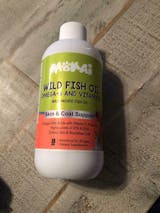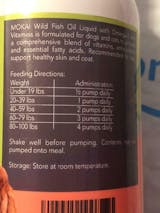Dog vomiting can be unpleasant and unsettling. However, if you have been a pet parent for a while, you must be somehow used to it. It’s a fact: dogs tend to vomit more than humans. They can do it for many different reasons, and usually, there’s nothing to worry about. However, there are some signals you should pay attention to, in order to ensure your pooch’s health.
Different types of dog vomiting
Have you ever paid attention to your dog’s vomit? Even though it is not uncommon in dogs, you must keep track of the aspect and frequency of your dog’s vomit.
Dog vomiting yellow: When your dog’s vomit is yellow, it usually contains bile, a digestive fluid produced by the liver. But don’t panic: vomiting bile is not always a matter of concern. Sometimes, dogs can do it as a result of an empty stomach. Gastric acids can irritate your dog’s stomach producing vomit. Dog vomiting yellow is usually not a severe condition, but if repeated frequently, it’s something you need to pay attention to.
Dog vomiting red: This is the vomit you should pay more attention to. Red vomiting is almost certainly related to blood, and this blood can come from your dog’s stomach as a result of inflammation or gastrointestinal disease. Even if the vomit contains a small portion of blood, I strongly recommend you consult with your vet to rule out any severe condition.
Dog vomiting white and foamy: This kind of vomit is usually a sign of gastrointestinal distress. It can indicate your dog has extra gas in his stomach. It can also occur when your dog has nothing else in his stomach to expel.
When there is an underlying cause of vomit, it is usually followed by other physical symptoms. Watch your dog: Make sure he is not suffering from diarrhea, loss of appetite, lethargy, change in frequency of urination or behavior.
What to give your dog for an upset stomach?
After vomiting, your dog’s stomach can be quite sensitive, so here are some things you can do to help him feel better.
- Avoid feeding him for a couple of hours.
- Give him bone broth, pumpkin, or chicken. These foods can be comforting after vomiting and help to rebuild the intestinal flora.
- If he continues throwing up, remove his water bowl. Hydration is very important, but excessive water can irritate your dog’s stomach. You can try giving him ice chips, to hydrate him slowly.
A dog’s nutrition is key to maintaining good overall health. Make sure your dog’s nutritional needs are covered through food and supplementation to prevent your dog from suffering any IG distress, such as vomit, gases, or inflammation.

















